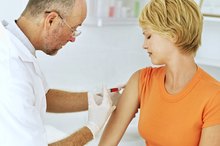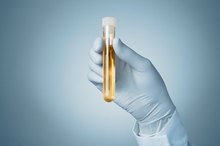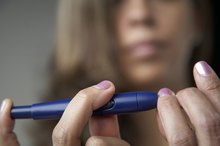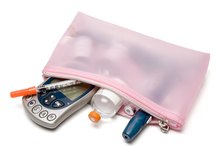What does fact checked mean?
At Healthfully, we strive to deliver objective content that is accurate and up-to-date. Our team periodically reviews articles in order to ensure content quality. The sources cited below consist of evidence from peer-reviewed journals, prominent medical organizations, academic associations, and government data.
The information contained on this site is for informational purposes only, and should not be used as a substitute for the advice of a professional health care provider. Please check with the appropriate physician regarding health questions and concerns. Although we strive to deliver accurate and up-to-date information, no guarantee to that effect is made.
What Are Critical Ranges for Glucose?
In medicine, laboratory results--including glucose readings--that indicate a life-threatening situation for a patient are known as "critical"or "panic" values and must be reported immediately to either the attending physician or the appropriate health care professional. Critical glucose levels are no exception.
Considerations
Glucose, a simple sugar resulting from the breakdown of carbohydrates in the diet, is the main source of energy in most living organisms. Like any other body chemistry, it is assigned a normal value range.
Normal Glucose Values
What Do Lipase Numbers Mean?
Learn More
Normal values must be established before critical glucose ranges can be recognized. Normal reference values are established through clinical studies and testing, and describe the results expected to be found in apparently healthy individuals. A normal 8- to 10-hour fasting glucose in a healthy adult should fall between 70 to 110 mg/dL.
Critical Glucose Levels
Critical glucose levels fall into two categories: critical low levels and critical high levels. Glucose levels that fall into a critical range may trigger irreversible damage to the body or even death.
Critical Low Glucose: Hypoglycemia
What Is Plus 4 in Glucose Levels?
Learn More
Hypoglycemia refers to abnormally low glucose levels 3. Glucose levels below 50 mg/dL are considered hypoglycemic, and a glucose of 40 mg/dL is a "critical value" requiring immediate action. Symptoms of critically low glucose include fainting, weakness, confusion and unconsciousness if not treated.
Critical High Glucose: Hyperglycemia
Hyperglycemia refers to abnormally high glucose levels. The American Diabetic Association recommends that a fasting glucose level above 126 mg/dL be considered hyperglycemic. Glucose levels in the 400 to 450 mg/dL range are considered "critical values" and require immediate attention. Symptoms of critically high glucose include confusion, lethargy, thirst, weak pulse and nausea. Diabetic coma and death may follow if not treated immediately to reduce the level.
- Hyperglycemia refers to abnormally high glucose levels.
- The American Diabetic Association recommends that a fasting glucose level above 126 mg/dL be considered hyperglycemic.
Significance
It is up to each laboratory to establish its own set of critical glucose ranges which require immediate physician notification. Reference ranges may vary based on methodology and the instrumentation involved.
Related Articles
References
- "Tietz Fundamentals of Clinical Chemistry;" Saunders; Sixth Edition; 2008
- "Clinical Chemistry Theory, Analysis, Correlation;" Mosby; Fourth Edition; 2003
- MedlinePlus: Hypoglycemia
- National Institute of Diabetes and Digestive and Kidney Diseases. Diabetes diet, eating, & physical activity. Published December 2016.
- American Diabetes Association. The big picture: Checking your blood glucose.
- American Diabetes Association. 6. Glycemic Targets: Standards of Medical Care in Diabetes-2020. Diabetes Care. 2020;43(Suppl 1):S66-S76. doi:10.2337/dc20-S006
- American Diabetes Association. 14. Management of diabetes in pregnancy: Standards of medical care in diabetes-2020. Diabetes Care. 2020;43(Suppl 1):S183-S192. doi:10.2337/dc20-S014
- Porcellati F, Lucidi P, Bolli GB, Fanelli CG. Thirty years of research on the dawn phenomenon: Lessons to optimize blood glucose control in diabetes. Diabetes Care. 2013;36(12):3860-2. doi:10.2337/dc13-2088
- American Diabetes Association. 5. Lifestyle management: Standards of medical care in diabetes-2019. Diabetes Care. 2019;42(Suppl 1):S46-60. doi:10.2337/dc19-S005
- Colberg SR, Sigal RJ, Yardley JE, et al. Physical activity/exercise and diabetes: A position statement of the American diabetes association. Diabetes Care. 2016;39(11):2065-2079. doi:10.2337/dc16-1728
- American Diabetes Association (ADA). Understanding A1C.
- Garber AJ, Abrahamson MJ, Barzilay JI, et al. Consensus statement by the American association of clinical endocrinologists and American college of endocrinology on the comprehensive type 2 diabetes management algorithm - 2019 executive summary. Endocr Pract. 2019;25(1):69-100. doi:10.4158/CS-2018-0535







